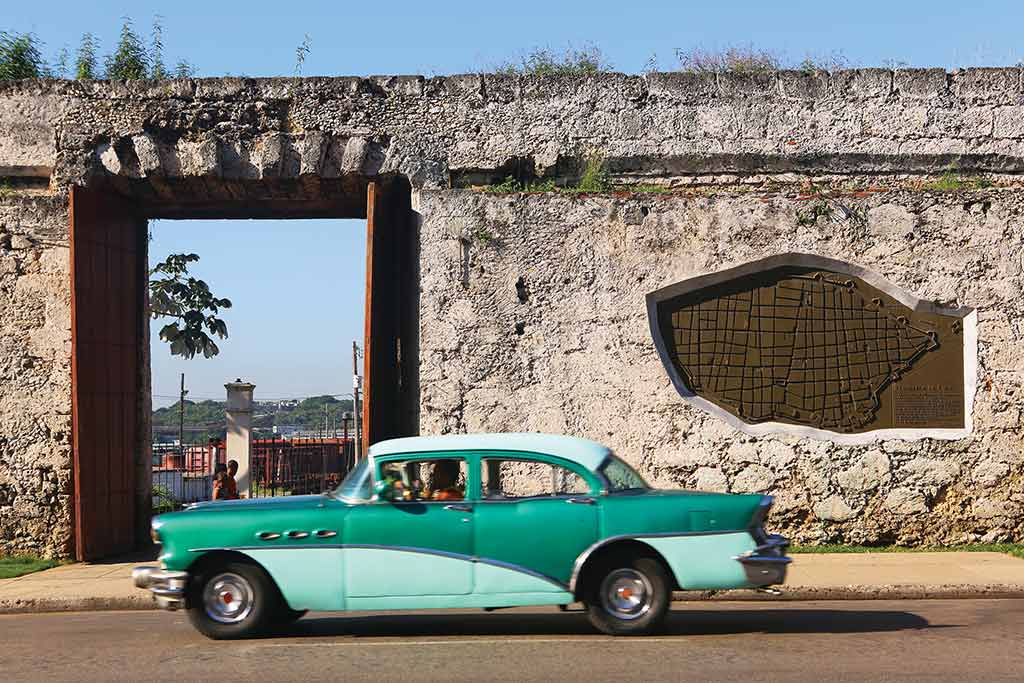Construction of Havana’s fortified city walls began on February 3, 1674. They ran along the western edge of the bay and, on the landward side, stood between today’s Calle Egido, Monserrate, and Zulueta. Under the direction of engineer Juan de Siscaras, African slaves labored for 23 years to build the 1.4-meter-thick, 10-meter-tall city wall that was intended to ring the entire city, using rocks hauled in from the coast.

Remnant of an old city wall in Habana Vieja. Photo © Christopher P. Baker.
The 4,892-meter-long wall was completed in 1697, with a perimeter of five kilometers. The damage inflicted by the British artillery in 1762 was repaired in 1797, when the thick wall attained its final shape. It formed an irregular polygon with nine defensive bastions with moats and steep drops to delay assault by enemy troops. In its first stage it had just two entrances (nine more were added later), opened each morning and closed at night upon the sound of a single cannon.
As time went on, the intramuros (the city within the walls) burst its confines. In 1841, Havana authorities petitioned the Spanish crown for permission to demolish the walls. Just 123 years after the walls went up, they came down again. The demolition began in 1863, when African slave-convicts were put to work to destroy what their forefathers had built.
Excerpted from the First Edition of Moon Havana.